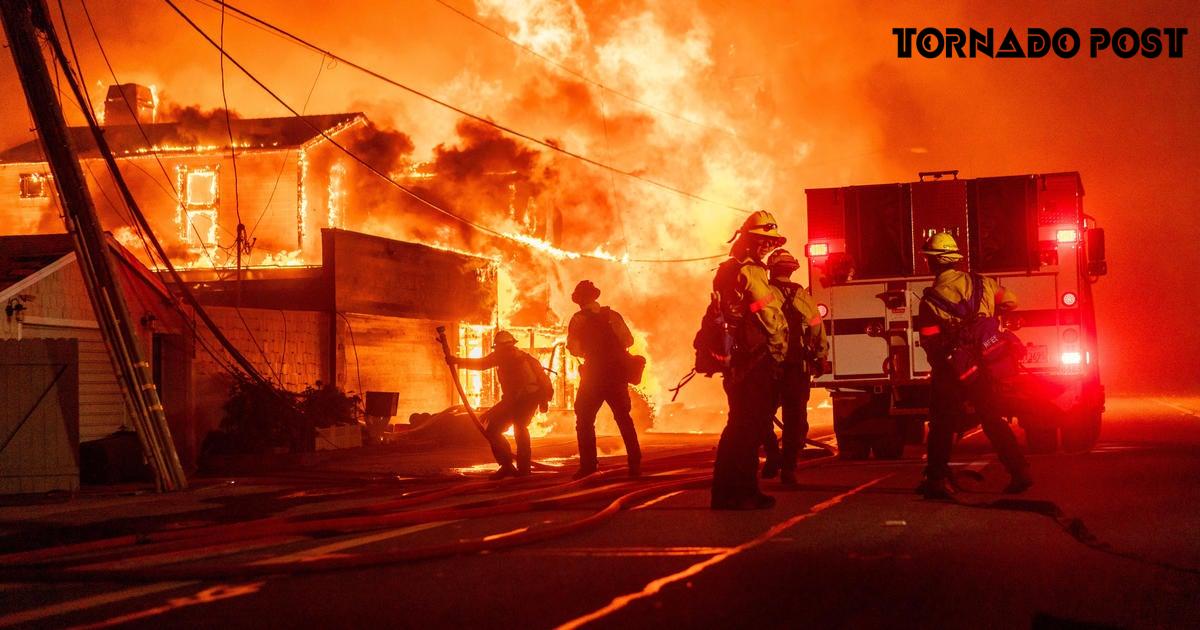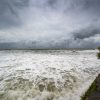California is currently facing a major emergency as fierce Santa Ana winds whip across the region, igniting fast-moving wildfires that have already led to widespread evacuations. The Palisades Fire, which erupted near the Pacific Palisades, has rapidly consumed over 3,000 acres in a single day, putting many homes at risk and prompting residents to flee their communities. The winds have been reported at gusts up to 100 mph, mixing with dry conditions to complicate firefighting efforts throughout Southern California.
Powerful Santa Ana Winds Ignite Widespread Fires
The Santa Ana winds, infamous for their strength, have intensified the danger of wildfires across Southern California. These winds were fueled by a confluence of high-pressure systems and a storm sweeping through northwestern Mexico. Residents in areas like Santa Clarita and Riverside have felt the brunt of these winds, with gusts reaching 70 mph, and in some mountainous regions, even exceeding 100 mph.
- Winds reached up to 100 mph in some areas.
- Over 220,000 customers lost power, with Los Angeles County hit hardest.
- Transportation has been disrupted, raising concerns for travelers.
- New fires sparked in regions usually shielded from severe winds.
Evacuations and Emergency Responses
With the raging flames threatening homes and wildlife, officials have instituted mandatory evacuation orders in several communities. Residents are being urged to heed evacuation orders and to remain aware of changing conditions. Emergency services are on high alert, working diligently to keep communities safe despite the escalating danger from these wildfires.
Continued Risks as Winds Persist
Although there is hope that winds will start to calm down later this week, Wendy Torres, a spokesperson for emergency services, warned that the threat remains imminent. “Even if winds subside, the fire danger remains extremely high due to the dry conditions,” she explained. The entire region is experiencing drought, with Los Angeles receiving only 4% of its typical rainfall since October 1st, increasing the fire risk significantly.
Understanding Red Flag Warnings
California’s forecasters have issued numerous red flag warnings, signifying conditions are ripe for severe fire danger. This includes regions of Los Angeles and Ventura counties, where the combination of strong winds and low humidity makes any small spark potentially catastrophic. These warnings serve as urgent notices to residents and local authorities, calling for heightened vigilance.
- Red flag warnings signal extremely dangerous fire conditions.
- Local fire departments are urging residents to prepare for possible evacuations.
- Community meetings are being held to coordinate local responses.
The Broader Impact of the Windstorm
This current windstorm, described by experts as one of the most destructive in over a decade, has not only triggered the wildfires but is also causing widespread power outages. To ensure safety, Southern California Edison has warned it may need to turn off power to over 400,000 customers to prevent further fire threats stemming from damaged electrical lines.
Weather Changes Ahead
While the immediate focus is on battling the wildfires, meteorologists are also monitoring weather patterns. A significant storm system is predicted to sweep across the country, possibly bringing wintry weather to areas further east. While this may alleviate the wind issue in California, the aftermath of the fire threat could linger for weeks. Many experts are keeping a close eye on how this system will interact with the ongoing wildfire crises, hoping it could bring much-needed rain to the bone-dry region.
| Location | Wind Gusts | Fire Area Burned |
|---|---|---|
| Santa Clarita | 70 mph | 1,000 acres |
| Riverside | 60 mph | 1,200 acres |
| Pacific Palisades | 100 mph | 3,000 acres |
As the situation continues to unfold, residents of Southern California are reminded to stay tuned for updates from the authorities. The courage and resilience of the communities affected are set against a backdrop of nature’s power, showcasing the vital importance of preparedness in the face of potential disasters.











